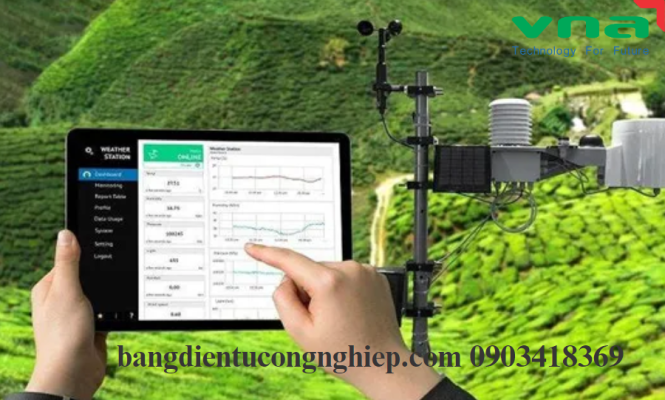Sửa chữa màn hình Led
Emission monitoring monitor – Automatic monitoring device
With the current development of science and technology, more and more industrial parks, export processing zones, factories, etc. Are being built to ensure the creation of product sources that meet consumers’ requirements. Emission monitoring monitor is one of the indispensable devices of the environmental monitoring system. It helps businesses manage emissions to ensure factory safety
Why should you use an exhaust Emission monitoring monitor ?
Emissions compliance:
- Exhaust gas monitoring is crucial for ensuring compliance with environmental regulations and emission standards set by governing bodies.
- These monitors provide the necessary data to demonstrate that emissions levels are within the permitted limits.
Process optimization:
- Real-time monitoring of exhaust gas composition and characteristics can help identify opportunities to optimize combustion processes and fuel efficiency.
- This can lead to reduced fuel consumption, lower operating costs, and minimized environmental impact.
Preventive maintenance:
- Exhaust gas monitoring can detect abnormal conditions or deterioration in equipment performance, allowing for proactive maintenance and avoiding costly breakdowns.
- Parameters like oxygen levels, particulate matter, and gas concentrations can indicate the need for engine/equipment servicing or component replacement.
Safety and risk management:
- Monitoring exhaust gases can help identify potential health and safety hazards, such as the presence of toxic or flammable substances.
- This allows for the implementation of appropriate safety measures and mitigation strategies.
- Exhaust gas monitoring supports efforts to reduce greenhouse gas emissions, air pollution, and other environmental impacts from industrial processes and transportation.
- The data collected can inform decisions on emission reduction strategies and sustainability initiatives.
Process control and optimization:

- Exhaust gas monitoring provides valuable feedback for adjusting operating parameters, such as air-fuel ratios, to maintain optimal performance and efficiency.
- This can lead to improved product quality, reduced waste, and enhanced overall productivity.
- Analyzing exhaust gas composition and trends can help identify the root causes of equipment malfunctions or process issues.
- This information enables more effective troubleshooting and maintenance procedures.
Operating principle of the exhaust Emission monitoring monitor
Sampling system:
- The monitor includes a sampling probe that extracts a representative sample of the exhaust gases from the emission source.
- The sample is then conditioned, filtered, and prepared for analysis, ensuring that it is free from particulates, moisture, and other interfering substances.
- The monitor is equipped with a range of sensors designed to detect and measure the concentrations of various exhaust gas components, such as:
-
- Oxygen (O2)
- Carbon monoxide (CO)
- Carbon dioxide (CO2)
- Nitrogen oxides (NOx)
- Hydrocarbons (HC)
- Particulate matter (PM)
-
Emission monitoring monitor – Analytical techniques:
- The sensors in the monitor utilize different analytical techniques to quantify the exhaust gas components, such as:
- Electrochemical sensors for O2, CO, and NO
- Non-dispersive infrared (NDIR) sensors for CO2 and HC
- Chemiluminescence sensors for NOx
- Optical sensors for particulate matter
- The monitor’s onboard microprocessor collects and processes the sensor data, performing necessary calculations and conversions to provide meaningful information about the exhaust gas composition and characteristics.
- The processed data is then displayed on the monitor’s interface or transmitted to a centralized monitoring system for further analysis, reporting, and decision-making.

Emission monitoring monitor – Analytical techniques:
Calibration and maintenance:
- Exhaust gas monitoring monitors require periodic calibration and maintenance to ensure accurate and reliable measurements.
- This may involve regular sensor calibration, zero and span checks, and replacement of consumable components as needed. The specific design and capabilities of an exhaust gas monitoring monitor can vary depending on the application, the type of combustion process being monitored, and the regulatory requirements. However, the underlying operating principle of sampling, analyzing, and reporting on the exhaust gas composition remains the same across different types of monitors.




